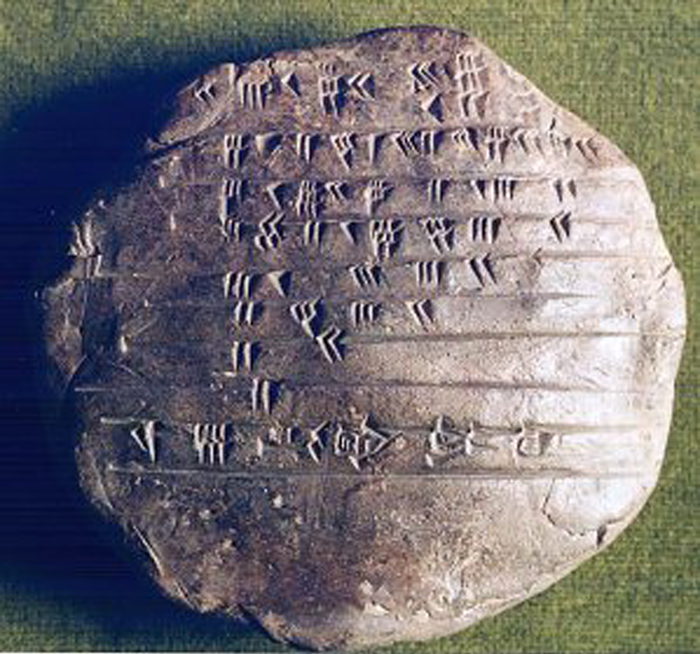- About MAA
- Membership
- MAA Publications
- Periodicals
- Blogs
- MAA Book Series
- MAA Press (an imprint of the AMS)
- MAA Notes
- MAA Reviews
- Mathematical Communication
- Information for Libraries
- Author Resources
- Advertise with MAA
- Meetings
- Competitions
- Programs
- Communities
- MAA Sections
- SIGMAA
- MAA Connect
- Students
- MAA Awards
- Awards Booklets
- Writing Awards
- Teaching Awards
- Service Awards
- Research Awards
- Lecture Awards
- Putnam Competition Individual and Team Winners
- D. E. Shaw Group AMC 8 Awards & Certificates
- Maryam Mirzakhani AMC 10 A Awards & Certificates
- Two Sigma AMC 10 B Awards & Certificates
- Jane Street AMC 12 A Awards & Certificates
- Akamai AMC 12 B Awards & Certificates
- High School Teachers
- News
You are here
Mathematical Treasure: Clay Tablets from Sumer
The oldest known clay tablet containing mathematical computations (Schøyen MS 3047) is today held in the Schøyen Collection. It is a multiplication table from 27th century BCE Sumer (now Iraq) giving area as a product of recorded lengths. Note the token impressions, which you can read more about in another Convergence article, "Mathematical Treasure: Mesopotamian Accounting Tokens." The tablet measures less than 3 inches in height and width and is less than an inch thick.

Below: A circa 1950 BCE clay tablet (Schoyen MS 1844), probably from pre-Babylonian Larsa (now in Iraq), contains a problem on the distribution of an inheritance: If a sum of money is to be divided among seven brothers so that the first gets two units of money and each other brother 1/7 more than his immediate predecessor, what are the shares to be? This tablet has a radius of about 4 1/3 inch and is over an inch thick.

The images above are presented through the courtesy of the Schøyen Foundation.
Frank J. Swetz (The Pennsylvania State University), "Mathematical Treasure: Clay Tablets from Sumer," Convergence (June 2018)




